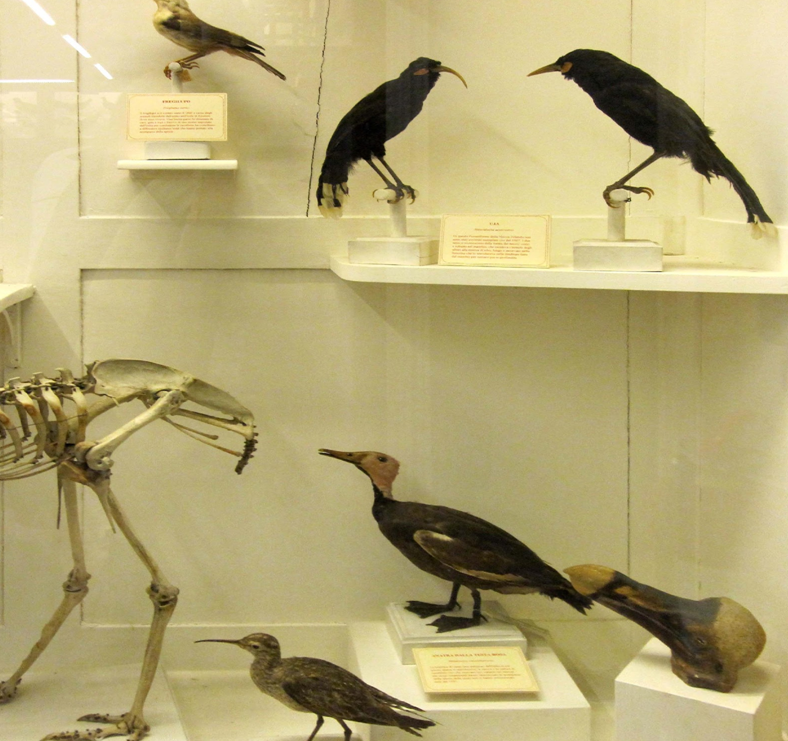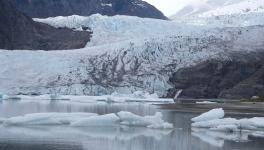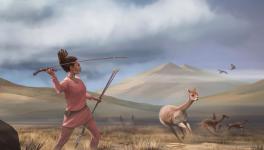Around 1,430 Bird Species Went Extinct due to Human Activities

Image source: Wikimedia Commons; used for representation only.
Human activity is linked to the extinction of nearly 12% of the world’s bird species, new research suggests, which has been published recently in the journal Nature Communication. This is nearly double the previous estimates.
The study highlighted that around 1430 bird species went extinct due to human activities since the late Pleistocene period (which is past 130,000 years). Notably, the earlier estimates of bird extinctions put the tally at 640 species, and this included the known extinctions identified from fossil and other records. However, the new study has encompassed those bird extinctions that happened without even being recorded, which is termed as dark extinction.
This was validated by Rob Cooke, the lead author of the recent research, an ecological modeller at the UK Centre for Ecology and Hydrology, when he commented in a statement to The Guardian, “We know we have lost iconic birds like the dodo, but we wanted to get a better estimate of the bird extinctions we didn’t know about.”
But the question is how can one estimate species extinction thousands or even lakhs of years ago without having any record? The answer is computer; yes, with the help of computer modelling, the researchers could extrapolate the earlier findings.
The team of researchers created a computer model starting with the extinction of those 640 species of birds, and their model suggested that there have been an additional 790 previously unknown species that disappeared.
Interestingly, the researchers suggest that only 50 out of those who went extinct were due to natural reasons, and the rest were subjected to human activities.
The researchers claimed in a press release, “Their study has uncovered the largest human-driven vertebrate extinction event in history, during the 14th century, estimating that 570 bird species were lost after people first arrived in the Eastern Pacific, including Hawaii and the Cook Islands – nearly 100 times the natural extinction rate,” suggesting that humans were particularly damaging in pacific.
“They believe there was also a major extinction event in the ninth century BC, primarily driven by the arrival of people to the Western Pacific, including Fiji and the Mariana Islands, as well as the Canary Islands, and highlight the ongoing extinction event, which started in the mid-18th century,” the release said.
Human activities since then have comprised an increase in deforestation, intensive agriculture and pollution, and the spread of invasive species coupled with anthropogenic climate change. Birds have faced extreme crises.
The bird extinctions have had cascading effects on ecosystems as they play a crucial role in pollination and seed dispersal.
Commenting on this aspect, Søren Faurby, a co-author of the research and a biologist at the University of Gothenburg, Sweden, was quoted to have said in a statement, “These historic extinctions have major implications for the current biodiversity crisis. We will have lost a lot of plants and animals that depended on these species for survival.”
In recent times as well, birds have faced new challenges due to human activities. An estimation suggests that in North America alone, around 2.9 billion individual birds disappeared since 1970, which accounts for a steep population decline of 29% or over one in four birds.
Previous research by the same authors suggests that the world may witness a further extinction of 700 bird species in the next few hundred years. This is considered an unprecedented human-driven decline of species. However, Cooke says that the further extinction of birds depends on us.
“Recent conservation has saved some species, and we must now increase efforts to protect birds, with habitat restoration led by local communities,” he added.
The team of researchers took New Zealand as the base for their modelling. This is because the country is the only place in the world where pre-human bird fauna is completely known. In addition, New Zealand has well-preserved remains of all the birds in the country.
Get the latest reports & analysis with people's perspective on Protests, movements & deep analytical videos, discussions of the current affairs in your Telegram app. Subscribe to NewsClick's Telegram channel & get Real-Time updates on stories, as they get published on our website.


















